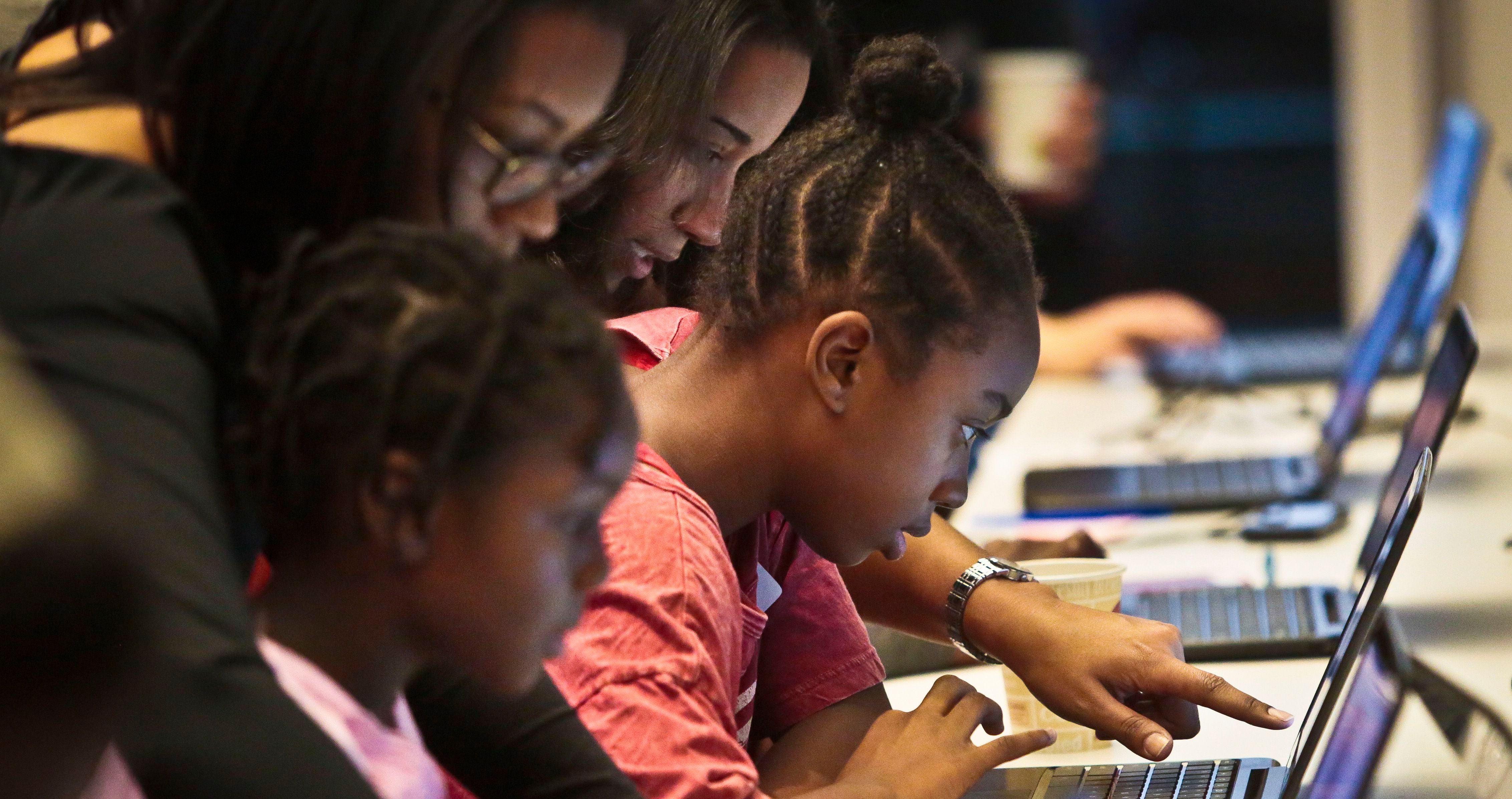The role of technology in early childhood education is a controversial topic. Parents and educators are now more concerned about the harm technology can cause to young children than the benefits it brings.
Critics argue that technology in schools is a is a waste of time and money, as it reduces the child's essential learning experiences (Cordes & Miller, 2000; Healy, 1998).
Supporters suggest that children should be given the opportunity to take advantage of new technologies.
Thoughtful observers are concerned about the way technology is utilized in early childhood education, and they believe it can be efficiently used if the right tools are employed.
The aim of this article is to discover the benefits of technology in early childhood education. It will highlight five advantages of using technology in early childhood.
It will also discuss the reason why schools are on the fence with the use of technology in education.
Young children have needs that are different from that of older children and adolescents. At a tender age, they learn how to walk, run, count and identify shapes.
It is essential for early childhood educators to support them develop their skills.
From birth to age eight these young children are learning rapidly, using all of their senses and their entire bodies to experience the world around them.
They develop cognitive and character skills. Cognitive skills are the core skills the brain uses to think, read, learn, remember things and pay attention;while character skills are soft skills such as willingness to learn, cooperation, resilience etc.
Millenials are very active and technology savvy. They are already informed on the things happening around them via social media.
From an early age, most of these young children already have cell phones and tablets they use at home.
They are developing in a world where a vast selection of technologies surrounds them.
From morning to bedtime, young children use technologies to engage in home and community events, get ready for school, participate in classroom activities and interact with others in the world around them.
Commercially acquired toys used in play activities are often technology-based, and children use many types of entertainment media in their homes.
Howard Gardner has shown that young children exhibit multiple learning styles and that the best way for them to learn is not the traditional teacher-directed verbal approach but through the use of technology.
So what are the benefits of using technology in early childhood education?
There are so many benefits of using technology in early childhood education. Here are five advantages of the use technology in early childhood education
1. Improved child learning and development
We are living in a world where it’s practical to disregard or avoid screen time. The young children of today are born in a digital era, and they need to be prepared for the digital life that lay ahead of them.
Using the right technology can enhance young children’s cognitive and social abilities. For instance, Preschool at Greensprings School occasionally uses a projector to educate young students in the classroom.
The school does this by playing interactive games and learning activities that are accessible online. Young children love the engaging games and activities, and they are particularly attracted to the vivid colours and animation features.
This improves their thinking and also helps them develop crucial skills that are needed in the society
.
2. Encourages school willingness and cognitive development
The use of technology in early childhood education makes learning a fun and enjoyable process.
A lot of educators still struggle to implement the use of technology into the schools’ curriculum.
Many are of the notion that technology in the classroom can be harmful to students, while this statement is true; we cannot deny the fact that it serves numerous benefits to students and teachers.
For technology to be of value in early education, it must provide prospects for children
to gain the necessary skills to prepare them for school.
Many developmentally suitable computer platforms increase a child’s readiness to learn verbal reasoning and math.
According to research by Science Engineering Medicine, they discovered that children age three and four years who learn using computers have a more significant gain in reasoning, problem-solving and conceptual skills than those who do not make use of technology.

Students at Greensprings School using the laptop.
3. Higher capacity for visual attention
Gaming and learning applications equip children to pay more attention to details to complete activities. At a tender age, young children love to play with toys and games.
There are numerous digital learning games that teachers can use to engage students in the classroom.
Some of the games include educational bingo, scavengers hunt, students made play etc.
Studies have shown that students who study presentations that included video, found it to be more engaging, informative and entertaining.
4. Improves Social Interaction Skills
An essential advantage of using technology in early childhood education is that it helps to improve the social interaction skills of young children.
The fact that these children learn using videos, multimedia learning materials to absorb information in the classroom, allows them to develop skills necessary for relating to other people.
When technology is used the right way, it can be used in collaboration with other people. In most preschools in Nigeria, young children are given the opportunity to solve problems together in the classroom, using technology, i.e. video learning through a projector, tablets etc.
This affords them the opportunity to share ideas.
5. Develops Skills and Talents
One of the primary objectives of schools is to help young students recognise their talents. Gifted students are those with potentials that are distinctly above average in one or more of the following domains of human ability; ; intellectual, creative, social and physical.
Teachers in early childhood education should make use of technology to develop the skills and talents of their students. Making use of interactive media allows these young children to be exposed to activities they tend to love.
When children are exposed to music or writing exercises onscreen early on, parents may discover their children’s interests. Young children get an idea of what gymnastics look like or race car driving through technology.
Ever notice a child humming a tune, or singing a line or two from a song he heard online? Who knows? That might be his calling.
Nevertheless, even with the advantages of technology in early childhood education, schools are on the fence on fully implementing it into their curriculum. What could be the reason for this?
Some of the major reasons why early childhood institution is on the fence in using technology in their curriculum include the cost of technology, reluctant to use technology and lack of teaching experience.
According to National PBS Survey, they found that 63% of educators say that the cost of implementing technology in the classroom is too high.
In Nigeria, public schools struggle to provide electricity in classrooms; 65 % percent of the 74,280 public primary and junior secondary schools in Nigeria lack power and as a result, cannot offer technology-based education.
This is a primary concern for educators in the country, and the government needs to look into providing more educational infrastructure and resources to these schools so that children can gain access to quality education.
Another major issue is the reluctant attitude of educators to use technology in the classroom, and this is because most educators of early childhood do not believe that technology should be used at a very tender age.
They are afraid of entirely giving up control to students. For technology to be fully embraced in schools, a culture needs to be created where teachers and administrators are no longer fearful of giving up a certain amount of control to students.
Educators need to take into account the age of the child when using a computer. Two crucial questions should be asked when introducing young children to technology;
1. Is it developmentally suitable—is it consistent with the child’s current developmental stage, as well as how a child develops and learns?
2. Will the activity benefit the child?
Take, for example, preschool students from age three to five years already know what a phone looks like, and they often use computers with the assistance of an adult.
Educators in early childhood education can make use of technological gadgets and learning tools to stimulate the minds of these young children.
At that age, they learn through exploration and discovery. If educators can answer these questions appropriately, they won’t be reluctant to use technology in schools.
Lastly, lack of trained teachers is another serious concern that explains why schools are on the fence in fully implementing technology into their curriculum.
Early childhood institutions need to be ready to change their programmes occasionally; with the addition of technology comes disruption.
Many school owners are slow to embrace technology because they are uncertain about the availability of expertise to support the implementation process.
Educators need to train their teachers on how to use and teach using technology. There are so many courses online on how to use different technological tools.
One powerful device which can be used for professional development is Social Media. Educators can develop their personal learning network (PLN) based entirely on their unique needs and passion.
Schools should not be afraid of using technology to educate their students in the classroom. Young children retain information faster when they learn using digital media.
However, there is a danger that other developmental needs will be ignored, e.g., physical play, outdoor exploration of nature; art, music and dance; learning specific social skills and moral values.
Some also believe that the availability of too much information on the internet will prevent our children from developing the persistence, ingenuity, tenacity, social adeptness and hard work needed to survive in the world.
Finally, to provide a framework for adopting technology in early childhood institutions, clear goals and objectives should be set on the use of technology in the classroom.
By doing this, they can supplement and support learning that occurs in the school.
The more choices available to a child in planning and communicating with others the better prepared he/she will be in interacting with the real world.
In conclusion, there are numerous advantages of using technology in early childhood education.
Educators need not be fearful of the use of technology, as children build up their skills and intellect by the application and use of technology in the classroom.
Technology is a tool that can provide another way for children to learn and make sense of their world.




